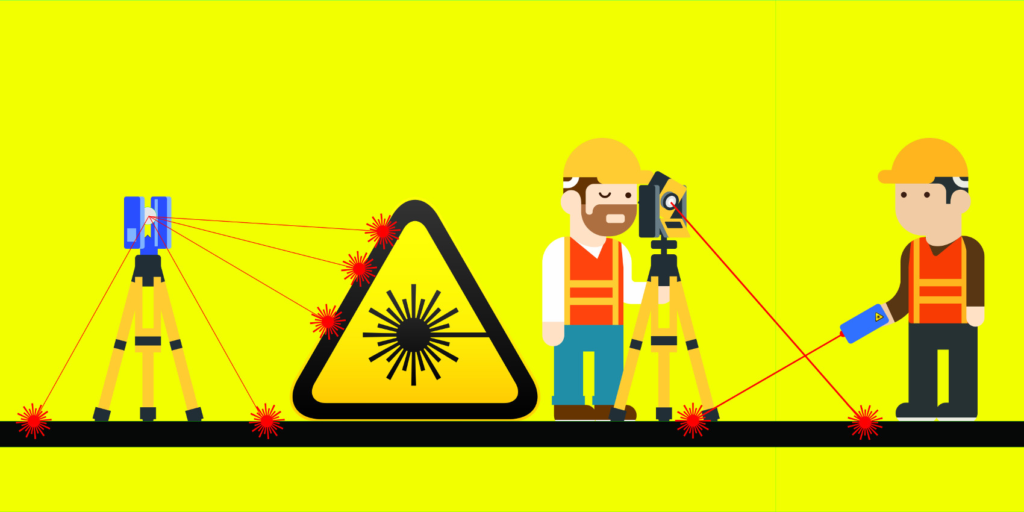Can the use of high-precision devices endanger our health?
To answer this question, it is necessary to learn more about the various types of lasers that exist, to know the potential risks caused by the instrumentation in use.

The distance meter commonly is of this type:
- Classe 2
The total station, depending on the models, usually supports one or two of the following types of lasers:
- Class 1 with the reflectorless system
- Class 2 for identifying the point to be measured
- Class 3R in the case of prismless measurement for long distances
The Laser Scanner, on the other hand, has one of the following specifications:
- Class 1
- Class 3R
Laser Classification

Knowing the class of the laser in use, is easy: it can be inferred from the data sheet or the Laser Class is listed next to the laser hazard symbol (sticker on the instrument).
The International Electrotechnical Commission (IEC), a global organization that prepares and publishes international standards for all electrical devices, has published IEC 60825-1, which outlines the safety of laser products. Here is the classification for the lasers listed:
- Class 1: lasers that are safe under reasonably foreseeable operating conditions, including the use of optical instruments to view the beam;
- Class 2: lasers that emit visible radiation in the wavelength range of 400 to 700nm; protection of the eye is normally provided by defense reactions including the eyelid reflex. This reaction provides adequate protection under reasonably foreseeable operating conditions, including the use of optical instruments to view the beam;
- Class 3R: lasers emitting in the wavelength range between 302.5nm and 106nm, where direct viewing of the beam is potentially hazardous but the risk is lower than for Class 3B lasers; the manufacturer’s requirements and control measures for the activity manager are less than for Class 3B lasers. The LEA is less than five times the Class 2 LEA in the wavelength range of 400 to 700 nm and less than five times the Class 1 LEA for other wavelengths.


